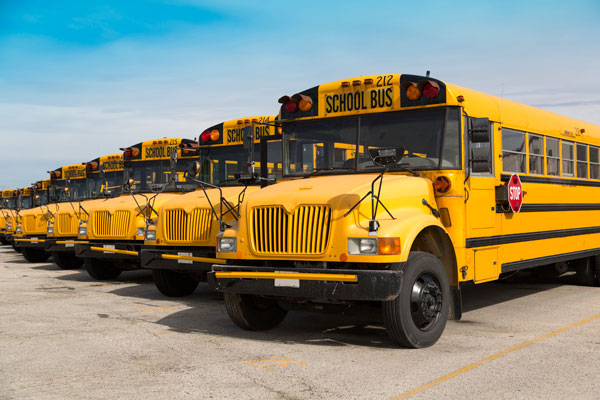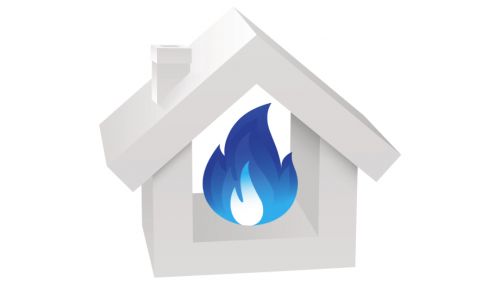All
PERC Works to Grow Autogas Market

Vehicle manufacturers are getting involved, and fleet owners are embracing the low-priced alternative fuel
Propane autogas is the third most widely used vehicle fuel in the world, but the U.S. lags behind other aggressive adopters, such as Australia, Poland and South Korea. The Propane Education & Research Council (PERC) is working to popularize autogas and eliminate obstacles to its adoption. Oil & Energyrecently reached out to Michael Taylor, PERC’s Director of Autogas Business Development to discuss the autogas market and PERC’s effort to grow it.
Oil & Energy: How many vehicles in the U.S. currently use autogas? How many autogas vehicles are being added per year?
Michael Taylor: Unfortunately, accurate autogas vehicle population data has not been maintained in the past, and PERC is working to change that. Depending on the source chosen, the U.S. autogas population is approximately 200,000 and growing.
In 2012, approximately 9,000 dedicated and after-market bi-fuel conversions were added. We anticipate that number will increase to 14,000 or more in 2013 and that the autogas population will continue to experience annual growth of 50 percent or more in the foreseeable future.
O&E: How would you rate public awareness of autogas and consumer attitudes towards the fuel?
MT: Public awareness is increasing, but we are not where we should be as a nation. The average citizen does not realize the environmental, economic and national energy security benefits linked to petroleum reduction strategies and the role propane autogas is playing today.
As a nation, there’s an immediate need to clean up our environment, strengthen the U.S. economy by creating American jobs, reduce foreign oil imports, reduce our nation’s petroleum dependence and stop sending money overseas to countries that have an intent to inflict harm on the United States.
PERC invests a tremendous amount of resources and time in the public education process. The typical propane autogas customer today is the centralized fleet, where return on investment and profitability are two key financial objectives.
Fleet managers definitely understand the need to reduce petroleum use and increase profits. Also, this customer typically utilizes centralized fueling, which benefits from propane autogas’s affordable infrastructure, portability and scalability. One of our major markets is school transportation and this platform is allowing us to expand our outreach exponentially. One benefit linked to this market is that consumer knowledge will increase by osmosis, if nothing else, as we transport more and more children to school and back home safely every day.
O&E: Please describe PERC’s efforts to raise awareness about autogas.
MT: PERC invests a tremendous amount of resources, time and dollars annually in the public and private education process. We are actively engaged in market outreach and communications, research and development and safety and training in our key markets, which include residential and commercial heating, power generation and construction, agriculture, off-road and on-highway vehicles. Information can be accessed on numerous PERC websites including propanecouncil.org, propane.com, and www.autogasusa.org.
O&E: Is autogas gaining popularity faster in some regions of the U.S. than others? Where are you seeing the most progress? How is response in the Northeast?
MT: Much like other technologies, products and strategies, propane autogas adoption has expanded previously at faster rates in some sections of the U.S. than in others. Early adopter states include Texas, California, Washington, Oregon and most of the Midwestern area; however, recent adoption and expansion is spreading to all states, including Alaska.
For instance, school bus sales have been logged in 34 states, including Kentucky, which is piloting their first spark-ignited engine in 25 years. Crittenden County (Marion, Kentucky) chose the Blue Bird Vision type C bus, which is equipped with the Roush Clean Tech Ford 6.8L dedicated propane autogas engine.
The Northeast region is moving rapidly to propane autogas in a number of markets, and there is a tremendous amount of interest, which is growing almost daily. Requests to demonstrate, educate and participate are coming in at a very high rate. Within the last year, sales of Blue Bird and Collins school buses, Roush Ford E and F series products and after-market conversion systems have increased in most Northeast states.
O&E: Please profile the current adopters. Are they mostly localized fleets?
MT: The typical propane autogas customer today is a centralized fleet with small to medium class vehicles and locations throughout the U.S. Return on investment and profitability are two key objectives, and fleet managers definitely understand the need to reduce petroleum use, reduce expenses and increase profits. Also, this customer typically utilizes centralized fueling, which is a perfect scenario for demonstrating and proving propane autogas’ affordable infrastructure, portability and scalability. One of our major markets is school transportation, and this platform is allowing us to expand our outreach to the American public exponentially.
O&E: How is autogas acceptance in the school bus market?
MT: School transportation sales have exceeded PERC’s expectations. While we have enjoyed success in this market in the past with loyal customers like Portland Public Schools and its contractor, First Student, we did not anticipate that our technology would be embraced and deployed at the rate we are experiencing today. In 2013, propane autogas will account for one out of every 10 type C school buses sold in the US and 30 percent of a major manufacturer’s production. That’s three out of every 10 school buses that Blue Bird Corp. will manufacture this year.
Our partnership with Roush Clean Tech and the investment in the research and development of propane autogas systems that utilize today’s automotive electronic fuel injection technology has allowed our fuel to impact the school transportation market in just 18 short months. I can’t wait to see what happens in the near future.
O&E: How significant is Ford’s decision to market an autogas-capable F-150? Also, FCCC’s development of the S2G chassis?
MT: The F-150 is the most popular work truck in the U.S., and this decision may expand PERC’s portfolio of propane autogas powered vehicles but not in the obvious application. For clarification purposes, the F-150 will be produced at the factory with an OEM gaseous fuel prep package which will allow PERC supplier partners like IMPCO, ICOM and Clean Fuels USA to install EPA and CARB certified systems on the popular truck, as a bi-fuel application. Ford Motor Company will not offer the propane-powered option as an assembly line vehicle.
In 2012, PERC Council approved a project to fund the Ford Transit van, which is equipped with the same 3.7L engine, but it’s doubtful that the longevity of the power train in the F-150 truck will have an impact at the OEM and Qualified Vehicle Modifier (QVM) dedicated engine level. It appears to be a logical inclusion of this engine into the F-150 product platform, but time requirements for EPA and CARB certification will most likely force us to miss the dedicated fuel opportunity.
Today Roush Clean Tech dedicated propane autogas systems are offered in three Ford engines that stretch out over 14 different Ford vehicle platforms including the F250-650 series trucks, F-53 and 59 strip chassis and E-150-350 series vans and E-450 strip chassis. Please don’t forget the RCT engine is the standard alternative fuel option for Blue Bird type A and C school buses also.
PERC continues to work diligently with OEMs and pursue with the intent of seeing more OEM offerings in the future; however, the Ford and GM products available today are OEM delivered units that require QVMs to install propane autogas systems at offsite locations. Full warranty and repair support is available through the Ford dealer network and OEM warranties are honored.
Unlike Ford and GM, vehicles produced by Freightliner Custom Chassis, Blue Bird, Collins and Thomas Built Bus and Isuzu are OEM products that are produced on the assembly and sold through a dealer network with complete dealer support including sales, marketing, warranty, repair and service.
O&E: How important is the autogas opportunity for propane retailers?
MT: Of all U.S. markets, a growing number of propane retailers across the country are enjoying the benefits of the development and availability of reliable propane autogas technology. The propane marketer will benefit from the lowest fuel costs possible while enjoying the performance of a vehicle that operates on the fuel they market and provide. It’s a win-win from both the capital cost and operations expense viewpoints.
From an economic standpoint, Propane marketers across the U.S. are replacing “lost gallons” that are linked to shrinking traditional markets and mild winters simply by embracing and promoting autogas as a fleet fuel. Marketers throughout the U.S. are engaging in this new and exciting business opportunity, which is producing income streams that will support and grow their business for years to come. It’s exciting to witness the transition of the typical propane marketer of the past into the autogas experts today.
O&E: Is autogas fueling largely limited to fleet locations? How many public autogas fueling locations are there in the U.S. now? What are your expectations for the years ahead? Will a public fueling infrastructure develop?
MT: Unlike other alternative fuels, Propane autogas is portable and easy to transport to any urban, suburban or rural location. Propane autogas is scalable, so there is no minimum vehicle requirement to realize an acceptable ROI. There are no special garaging or maintenance requirements different than today’s gasoline and diesel technologies.
Typically propane marketers will provide the fueling infrastructure at no upfront costs in exchange for a long-term fueling contract. As more and more fleet customers embrace propane autogas and increase their fleet purchases throughout the U.S., the propane autogas infrastructure will expand. It’s inevitable.
O&E: Is it legal and/or advisable to fuel autogas vehicles from propane stations that are designed to fill portable BBQ-style tanks?
MT: While it is conceivable to fuel at this type of location, PERC does not condone fueling at sites that are not adequately equipped to dispense fuel safely. In 2012, PERC developed a minimum recommended fuel dispenser specification, and we offer it to the public for use in constructing fueling sites. The specification can be located at www.autogasusa.org.
Autogas fuel providers must adhere to and comply with all federal, state and local codes, regulations and requirements, which are covered in NFPA 58 and 30 documents. PERC does not recommend fueling from sites that do not comply with all codes, regulations and requirements.
O&E: What is the current price advantage for autogas versus gasoline and diesel, respectively, compensating for the variation in mpg?
MT: Propane autogas offers a comparable, equivalent 40 percent to 60 percent price advantage over diesel and gasoline throughout the U.S. While it is true there may be a 10 percent to 15 percent difference in MPG, this measurement is a relative term and has minimal meaning in most of our propane autogas markets.
Sustainability should be measured as “cost to deliver the payload per mile,” and the propane autogas ROI is significant when you take this approach to measuring the success of a fuel’s sustainability. Propane autogas’s ROI has been documented and validated by our loyal customers, and the results are astounding.
O&E: Is PERC supporting any current R&D relating to autogas and autogas vehicles?
MT: Daily. Numerous projects. Dedicated, bi-fuel and dual fuel technologies and market applications. On road and off road.
Related Posts
 The Possibilities of Renewable Propane
The Possibilities of Renewable Propane
Posted on March 13, 2024
 Propane Can Do That
Propane Can Do That
Posted on March 12, 2024
 Take Action and Take Control of Your Future at Industry Summit VI and Visions ‘24
Take Action and Take Control of Your Future at Industry Summit VI and Visions ‘24
Posted on March 11, 2024
Enter your email to receive important news and article updates.

